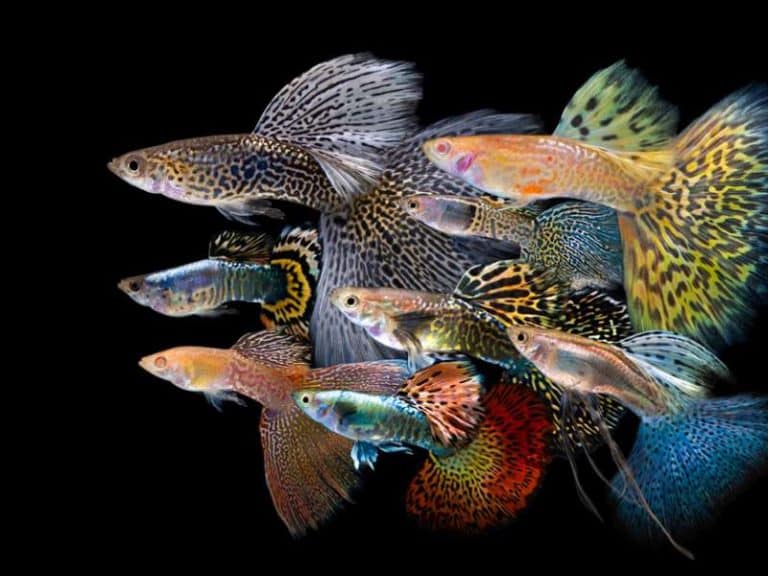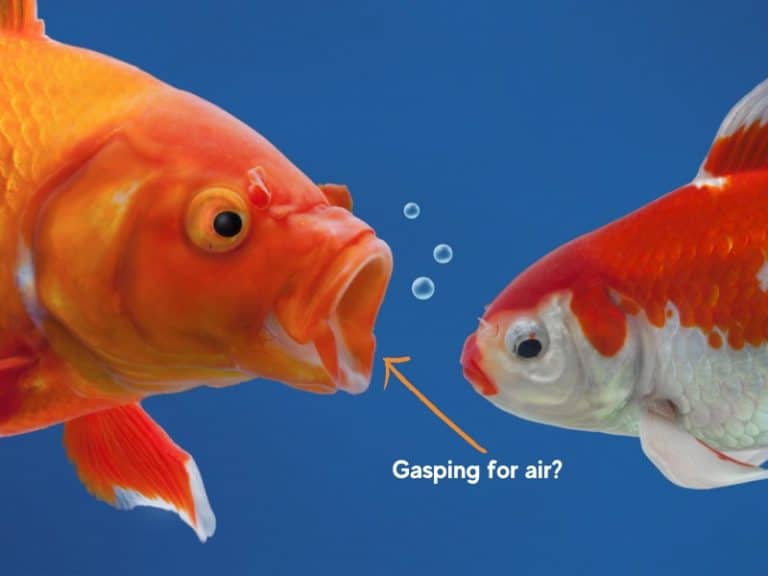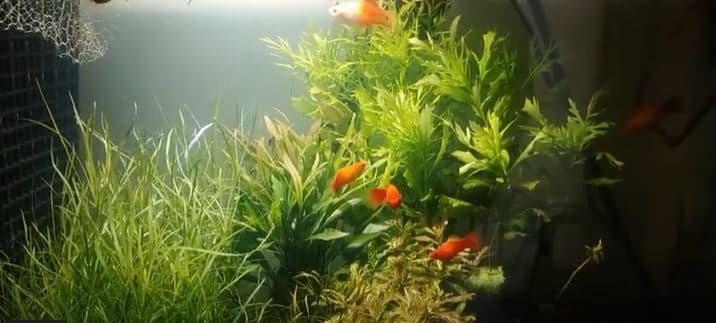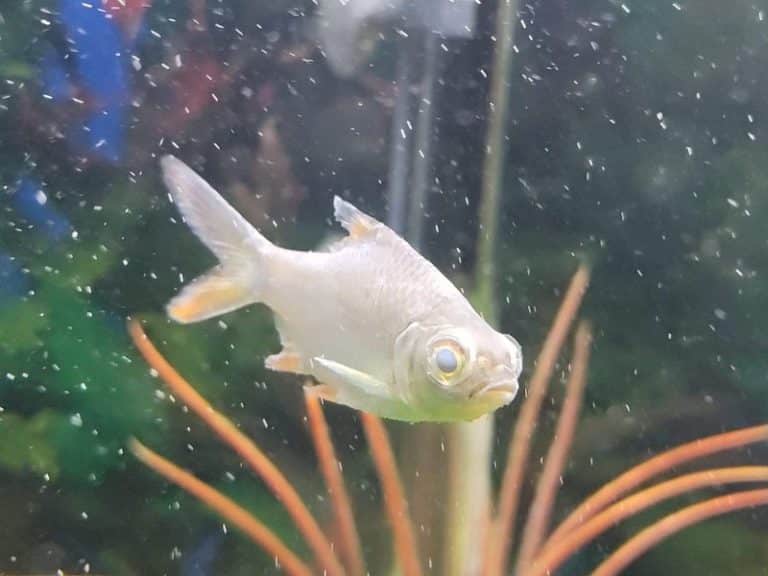Platies are livebearers, meaning they retain eggs inside the body (instead of laying them) and then give birth to active fry. If you’re a beginner with platies in your aquarium, this guide contains everything you need to know about pregnant platies, including signs, duration, stages, and proper care.
Signs: How to tell a platy fish is pregnant
The easiest way to tell your female platyfish is pregnant is when you see an enlarged and darkened gravid spot. The abdomen will also enlarge as her young develop within her belly. Her overall color will darken, and her appetite and aggression will also increase.
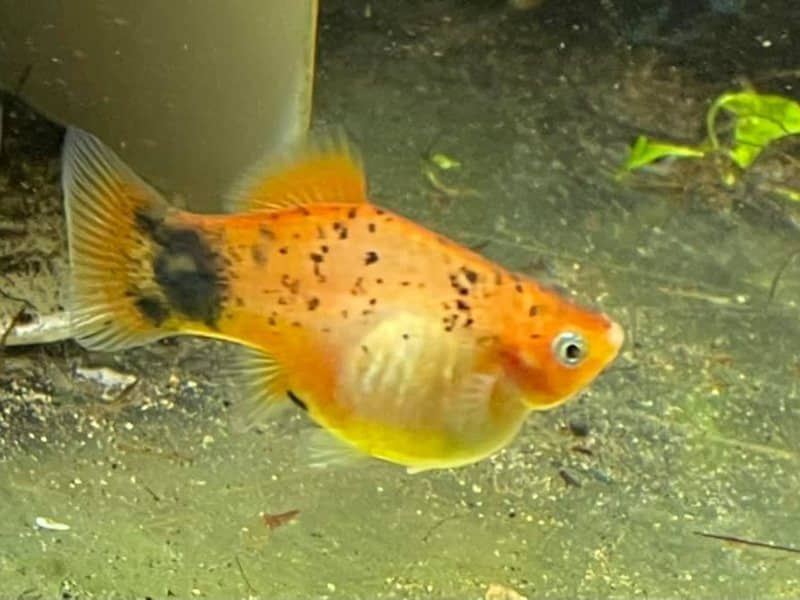
Here are the symptoms of a pregnant platy in detail:
Enlarged gravid spot
The gravid spot is the area behind the anal fin of your female platyfish. Since platyfish do not lay eggs, they produce the eggs but store them in the gravid spot awaiting fertilization. After mating, the fry starts forming, making the gravid spot enlarge.
The gravid spot also darkens when the platy is pregnant. You might not see the gravid spot if your fish is black, but you’ll notice black spots all over its body. That’s a tell-tale sign your platy is pregnant.
Swollen abdomen
Another symptom is a swollen abdomen that starts to show more two weeks into the gestation period.
It’ll appear round as the platy grows larger than the other fish. This is when it is easier to tell the difference between a male and female platy.
Hiding
Pregnant platies like to hide to protect themselves from makes that like to chase and disturb them.
However, I recommend testing the aquarium water to ensure she isn’t hiding due to ammonia poisoning. If the water quality is great, the hiding behavior is likely a sign of pregnancy.
The pregnant fish may also start following the male around the tank. Before giving birth, the platyfish will hide in a secluded tank area to deliver safely and protect its fry.
Increased appetite
If you observe your fish closely, you’ll notice a pregnant platy eating more than usual. During the first days of the pregnancy, you might not see changes in appetite. However, as the fry develop, the pregnant fish will eat significantly more to cater to the fry.
However, pregnant livebearers lose their appetite a few days before giving birth. In fact, your platy may refuse her meals due to distress when her labor sets in.
How long are platy fish pregnant for?
The gestation period of platy fish lasts about 28 days. Pregnant females carry fry in their womb for about 4 weeks before giving birth. However, in some cases, platyfish can be pregnant for as long as 35 days.
I found a study by Michael J. Siciliano of The University of Chicago that revealed that some varieties of platyfish had a gestation period between 27 and 35.5 days.
Fun fact: Female platyfish take about 4 to 5 months to be mature enough to conceive. They also become ready to become pregnant just two weeks after giving birth, so get a big tank for platies if you want to breed them.
Pregnancy stages
A pregnant platyfish undergoes four stages of pregnancy from its development until it gives birth to its young. These stages entail sexual maturity, mating, gestation, and giving birth.
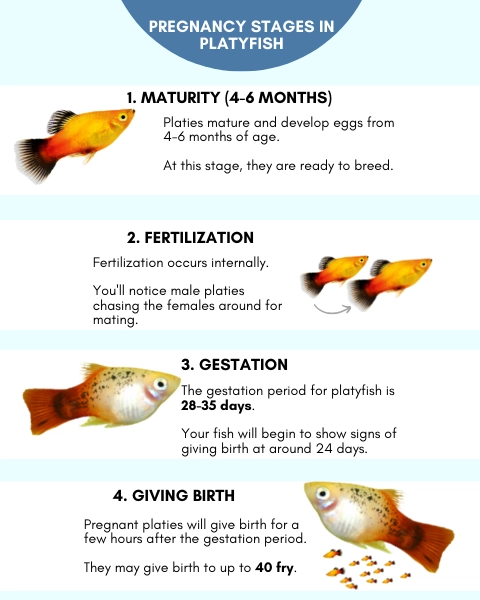
1. Sexual maturity
Platyfish are considered adults at 6 months of age, but they become ready to breed at 4 months. Therefore, the first stage is maturity to breed, which occurs at about 4 months, when the female can produce eggs and mate.
Adult male platies start chasing the females around the tank for mating at this stage. Typically, the anal or rear fin becomes wider and resembles a fan in mature female platyfish.
2. Fertilization
When platies are ready to mate, the male starts following the female and becomes aggressive to other males. It pesters and rubs itself against the female.
The fertilization process involves the male releasing sperm into the female through their sexual organ called a gonopodium. The gonopodium is the long, pointed anal fin on the male platy. It is used to insert the gametes (fish sperms) into the female to fertilize the eggs internally.
Pro tip: Keep one male for three female platies to prevent the females from being stressed during mating.
3. Gestation
The gestation period begins as soon as fertilization occurs. Since platies are ovoviviparous, their fry form inside the fertilized eggs until they are mature.
This takes about 28 days, after which the fish gives birth.
4. Birth
When a pregnant platy is about to give birth, it typically hides in a nesting place and does not look as active as other fish. The female may also stay at the bottom of the tank as it is too heavy to swim to the top.
Check if there is any fry in the tank every morning because most platies give birth at night. The livebearing process can take a few hours since the platy drops one fry at a go.
Pregnant platies give birth to up to 40 fry. Ensure you move fry into a breeder box to prevent them from being eaten by starving platies or other aggressive tank mates such as bettas.
Care tips for pregnant platyfish
Keep watch of your pregnant platy to know if she’s about to give birth and to ensure safe delivery. Provide the correct water parameters and prevent stress-causing factors for pregnant fish.
Here are useful care tips for pregnant platy fish:
- Maintain proper water conditions: keep the water warm at about 70 to 77°F and at a pH range of 6.8 to 8.0.
- Keep water hardness at about 10-28 dGH with no toxins such as ammonia.
- Perform a 25% water change weekly to keep the tank clean and free of bacteria, toxic substances, or fungus.
- Provide enough food for pregnant platies to cater to their increased appetite.
- Do not drop too much food in the tank at once, as it will lead to nitrogen accumulation and wastage.
- Increase proteinous food to promote fry development. Examples are brine shrimp and bloodworms.
- Add plants to the tank to provide plenty of hiding places for pregnant platies. I recommend more willow moss, hornworts, and duckweed.
- Add a breeding tank that’s about 20 gallons to fit the fry and mother platy.
Should I separate a pregnant platy?
It is a good idea to separate a pregnant platy fish to protect the young from being eaten by other fish. Isolation also ensures the pregnant fish remains peaceful and stress-free.
How do I know if my platy is going to give birth?
You’ll know your platy is about to give birth when her abdomen transforms into a “square” shape and her cloaca dilates.
Additionally, she will start excreting white or clear poop that looks stringy.
When should I separate pregnant platy?
Separate a pregnant platy about a week or a few days before she gives birth. Put her in her own tank as soon as her cloaca dilates to ensure the safety of fry when they are born.

